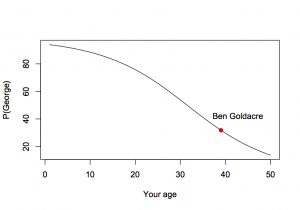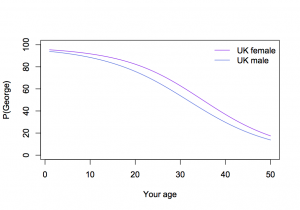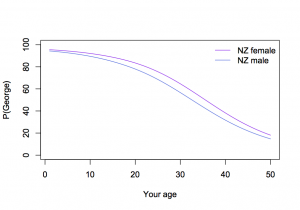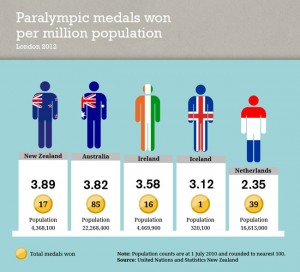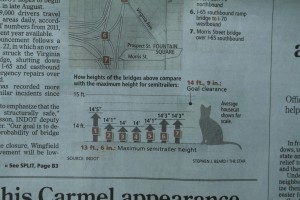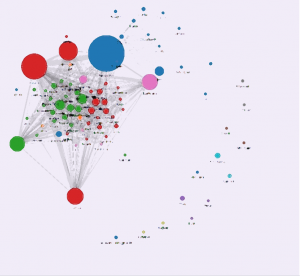Royal baby coronation lifetables
Ben Goldacre asked on Twitter
I’m 39, Prince William is 31, what are the odds of me seeing King George on the throne? Taking current projected mortality trends, that is.
— ben goldacre (@bengoldacre) July 24, 2013
As he suggests, we’re going to have to make some oversimplifications. Both Prince William (who comes from a wealthy, long-lived family) and Ben Goldacre (who is a skinny, hyperactive medical doctor) are likely to live longer than the typical UK male, and we will ignore this. We will also ignore the possibilities that Baby George dies before his father, or that William dies before his father or grandmother, and the possibility that there won’t be a throne for King George.
Now we need to get life tables for UK males, which give the current risk of death at each age. For each year into the future, we multiply the chance of Prince William dying in that year by the chance that Dr Goldacre is still alive, and add these up, to get a little over 30%
We can do the same thing for UK females and (with NZ life tables) for NZ males and females
